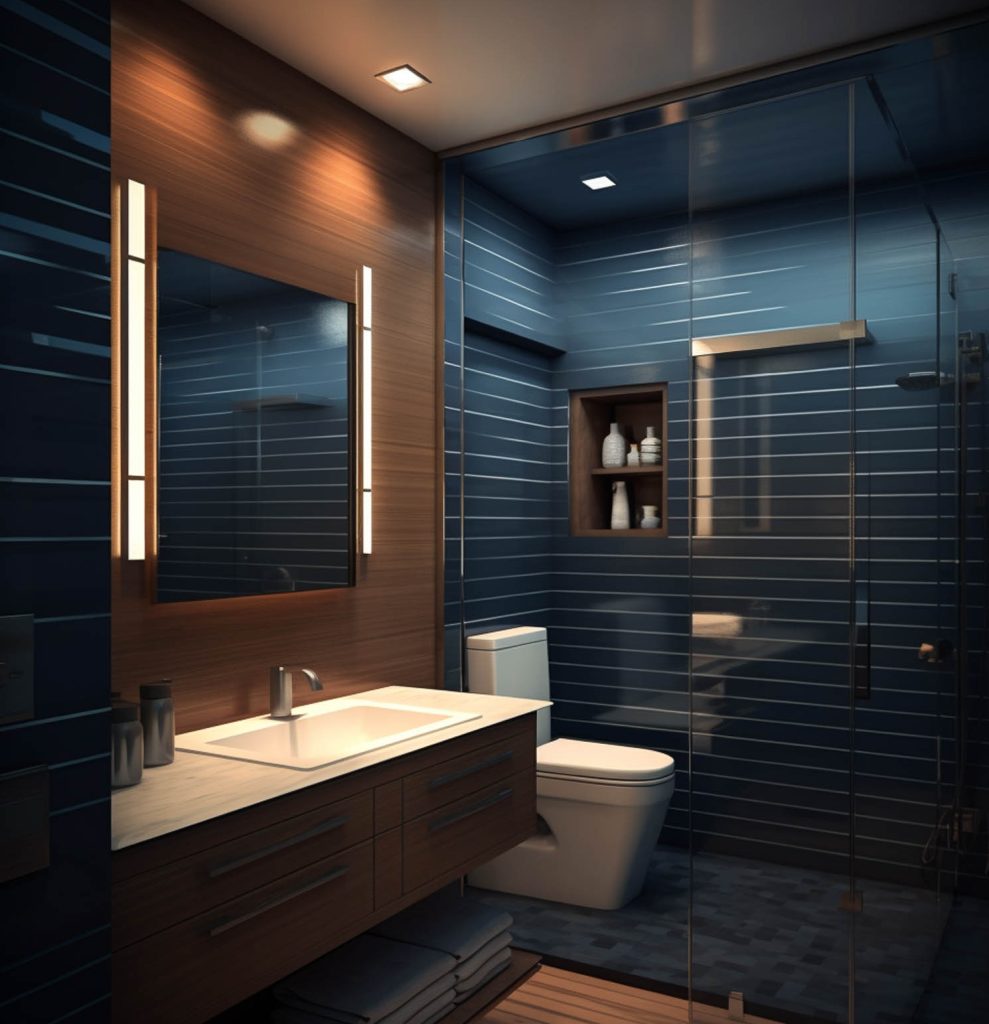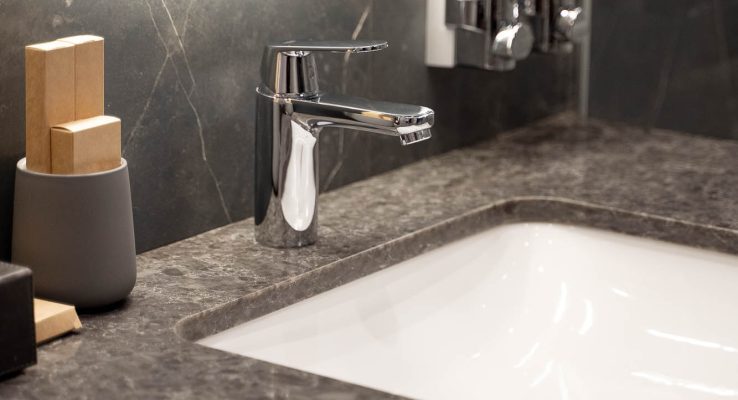The Essential Guide to Bathroom Lighting
A well-designed bathroom combines functionality, comfort, and style. Lighting plays a critical role in achieving this balance, transforming a simple bathroom into a warm, welcoming space or a functional grooming area. Proper lighting enhances both the look and feel of your bathroom, making it a space that suits various needs. In this guide, we’ll explore different types of bathroom lighting, including task, ambient, and decorative options, and provide tips on how to achieve a balanced lighting setup.
1. Task Lighting for Precision and Clarity
Task lighting is essential for focused tasks such as shaving, makeup application, and grooming. Typically placed around mirrors or vanities, task lighting ensures you have clear, shadow-free visibility, which is essential for precision. The best approach for task lighting is to use fixtures on both sides of a mirror, as this setup minimizes shadows on the face.
Tips for Effective Task Lighting:
- Positioning: Place lighting on both sides of the mirror for an even glow.
- Light Type: LED lights are a great choice, as they provide bright, clear light without generating heat.
- Color Temperature: Opt for a color temperature between 3,000K and 4,000K, which provides a neutral white light, ideal for grooming.
2. Ambient Lighting for Overall Brightness
Ambient lighting provides general illumination for the entire bathroom, ensuring a comfortable level of brightness throughout the space. Often, ambient lighting is created through ceiling fixtures, recessed lights, or central-mounted lights. This type of lighting sets the overall tone and atmosphere of your bathroom.
Tips for Effective Ambient Lighting:
- Fixture Choice: Ceiling fixtures or recessed lights are great for evenly distributing light throughout the bathroom.
- Layering: Layer ambient lighting with task and accent lighting for a balanced and visually appealing effect.
- Dimmable Options: Consider dimmable lights to adjust the brightness based on the time of day or your mood.
3. Decorative Lighting for Style and Personality
Decorative lighting is a way to add personality to your bathroom. It enhances the overall look and adds a unique touch, often through eye-catching fixtures like chandeliers, pendant lights, or sconces. While decorative lighting adds visual appeal, it’s essential to make sure it complements the primary task and ambient lighting without creating excessive shadows or glare.
Tips for Decorative Lighting:
- Placement: Use decorative lighting in spaces that don’t interfere with functional lighting, such as above the bathtub or in open wall spaces.
- Style Match: Select decorative fixtures that align with your bathroom’s style—whether modern, classic, or eclectic.
- Lighting Tone: Choose a warm lighting tone to create a cozy, inviting atmosphere, especially for accent lighting.

4. Accent Lighting to Highlight Key Features
Accent lighting adds depth and interest by drawing attention to specific areas or features in your bathroom, such as architectural details, artwork, or plants. Accent lighting creates layers of light, which makes the room feel more dimensional and adds a luxurious touch.
Tips for Effective Accent Lighting:
- Positioning: Place accent lighting above or around the feature you want to highlight, like a piece of art or an alcove.
- Bulb Type: LED strips or small recessed lights are effective for accent lighting.
- Color Temperature: Opt for warmer tones to create a soft, relaxing atmosphere around highlighted features.
5. Choosing the Right Bulbs for Bathroom Lighting
Selecting the right type of bulb for your bathroom is essential for achieving the ideal ambiance and functionality. LEDs are popular due to their energy efficiency and long lifespan, and they come in various color temperatures to match different lighting needs.
Bulb Tips:
- LED Lights: LEDs offer longevity, lower energy consumption, and versatile color temperatures.
- CRI (Color Rendering Index): Look for bulbs with a CRI of 90 or higher for accurate color rendering, essential for grooming tasks.
- Color Temperature: Use a mix of color temperatures (e.g., neutral white for task lighting and warm white for accents) to achieve a balanced effect.
6. Balancing Lighting for a Cohesive Look
A well-lit bathroom requires a balance of task, ambient, decorative, and accent lighting. When layering these lighting types, pay attention to the overall flow and avoid overloading any single area. Using dimmers can help you adjust the light levels throughout the day, from bright morning lighting to soft evening illumination.
7. Safety Considerations for Bathroom Lighting
Since bathrooms are high-moisture areas, ensure that your lighting fixtures are safe and suitable for these conditions. Fixtures near water sources should have an IP (Ingress Protection) rating of at least IP44 or higher, which ensures they’re protected against moisture.
Final Thoughts
Proper lighting can elevate your bathroom’s functionality and style. By combining task, ambient, decorative, and accent lighting, you can create a well-lit, aesthetically pleasing space that meets all your needs. Whether you’re remodeling or simply updating fixtures, investing in a well-planned lighting setup can make a significant difference in your bathroom’s overall appeal and usability.
